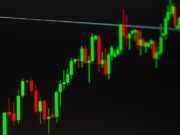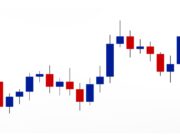The right stocks can make you rich and change your life.
The wrong stocks, though… They can do a whole lot more than just “underperform.” If only! They can eviscerate your wealth, bleeding out your hard-won profits.
They’re pure portfolio poison.
Surprisingly, not many investors want to talk about this. You certainly don’t hear about the danger in the mainstream media – until it’s too late.
That’s not to suggest they’re obscure companies – some of the “toxic stocks” I’m going to name for you are in fact regularly in the headlines for other reasons, often in glowing terms.
I’m going to run down the list and give you the chance to learn the names of three companies I think everyone should own instead.
But first, if you own any or all of these “toxic stocks,” sell them today…
IonQ (IONQ): Why It’s Time to Avoid This Stock
IonQ (IONQ) turned heads in 2024 with a remarkable 225% surge in its stock price, driven by investor enthusiasm around its promise in quantum computing. However, as we step into 2025, it’s worth taking a closer look at whether IonQ is a sound investment or simply a high-risk gamble. While the idea of quantum computing solving complex problems in healthcare, engineering, and other fields is enticing, IonQ’s fundamentals reveal significant red flags that cautious investors cannot ignore.
The company is still in the early stages of its lifecycle, having reported only $37 million in revenue over the past 12 months. Meanwhile, it racked up over $171 million in net losses during the same period, with $120 million in negative free cash flow. This means IonQ is burning through approximately $30 million in cash each quarter. While the company has over $365 million in cash on hand to fund operations for now, this runway is not infinite. At its current pace, IonQ will likely need to raise additional funds through debt or equity offerings in the near future, which could dilute shareholders or add financial strain.
Quantum computing is a fascinating but speculative industry, and IonQ is far from proving its commercial viability. The technology, while groundbreaking, remains error-prone and expensive to scale due to its sensitivity to temperature fluctuations and electronic interference. For IonQ to fulfill its potential, it must overcome these significant challenges and demonstrate that it can produce reliable and scalable quantum computing solutions. Until then, the company’s ambitious goals remain just that—ambitions.
For investors seeking stable, profitable companies, IonQ represents a risky proposition. With limited revenue, mounting losses, and an unproven technology, it is not a stock for the faint of heart. While speculative investors may find IonQ’s potential intriguing, the risks far outweigh the rewards for those prioritizing consistent returns or value. IonQ’s performance in 2024 was impressive, but its fundamentals suggest that now might be the right time to step away and let this speculative play prove itself—if it can.
Micron Technology (MU): Weak Demand Signals Trouble Ahead
Micron Technology (MU) is facing mounting challenges that make it difficult to justify holding onto the stock right now. While the company has been ramping up production of high-bandwidth memory (HBM) to meet the soaring demands of AI applications, the market for standard memory chips—its bread and butter—looks increasingly grim.
Prices for DRAM (dynamic random-access memory), which is widely used in PCs and smartphones, are expected to tumble by 8% to 13% in the first quarter of 2025, according to TrendForce. Even factoring in the boost from HBM, overall DRAM prices are projected to decline by as much as 5%. And it doesn’t stop there—NAND prices could drop 10% to 15%, with the PC and smartphone segments taking the hardest hit.
Why the slump? A mix of seasonal softness, weak demand for consumer electronics, and some strategic over-ordering by customers anticipating tariffs under President-elect Trump’s administration. Add to that the pressure from Chinese manufacturers flooding the market with older DDR4 memory chips, and it’s clear Micron is grappling with serious headwinds.
Even the much-hyped AI boom, which has buoyed demand for HBM, isn’t enough to offset these challenges. With PC and smartphone markets still sluggish and a glut of inventory weighing on prices, Micron’s profitability could remain under pressure for the foreseeable future.
For now, Micron feels like it’s stuck in a memory market time warp—a place where demand is soft, prices are falling, and hope is pinned on future recoveries that are far from certain. Investors looking for stability or near-term growth would be better off sitting this one out until the market dynamics improve. Sometimes, it’s better to step aside than hang on for a bumpy ride.
Kraft Heinz (KHC): A High Yield with Hidden Risks
At first glance, Kraft Heinz’s 5.2% dividend yield might seem appealing, especially compared to the consumer staples sector’s average of 2.5%. But a closer look reveals that this high yield comes with significant risks, particularly as the company’s much-touted turnaround plans for 2024 fell short of expectations.
The struggles at Kraft Heinz are not new. Since the 2015 merger of Kraft and Heinz—spearheaded by 3G Capital with financial backing from Warren Buffett’s Berkshire Hathaway—the company has faced ongoing challenges. The initial cost-cutting strategy boosted profitability in the short term, but it quickly became apparent that Kraft Heinz couldn’t cut its way to sustained growth. Over the years, leadership changes and the eventual exit of 3G Capital in 2023 highlighted the company’s inability to execute effectively.
In 2024, Kraft Heinz set modest goals, aiming for organic sales growth of 0% to 2%. Instead, the company posted declines in every quarter, with organic sales dropping 0.5% in Q1, 2.4% in Q2, and 2.2% in Q3. Even more troubling, its “Accelerate” businesses—supposedly the focus of its turnaround efforts—performed even worse, with a steep 4.5% decline in Q3.
While other companies like Unilever have successfully implemented similar strategies, Kraft Heinz has failed to demonstrate meaningful progress. Unilever, for instance, achieved 4.5% sales growth in Q3 2024, a stark contrast to Kraft Heinz’s ongoing struggles. This poor execution has left the stock underperforming its peers, with little to suggest a near-term improvement.
Although the company owns a portfolio of well-known brands and is investing in rebuilding its marketing and innovation capabilities, these efforts will take time to yield results. For now, the stock’s high yield is a reflection of its challenges rather than a reward for strong performance.
Investors looking for stability or growth in the consumer staples sector should steer clear of Kraft Heinz until the company shows concrete signs of reversing its downward trajectory. For now, this high-yield stock remains a risky bet.






